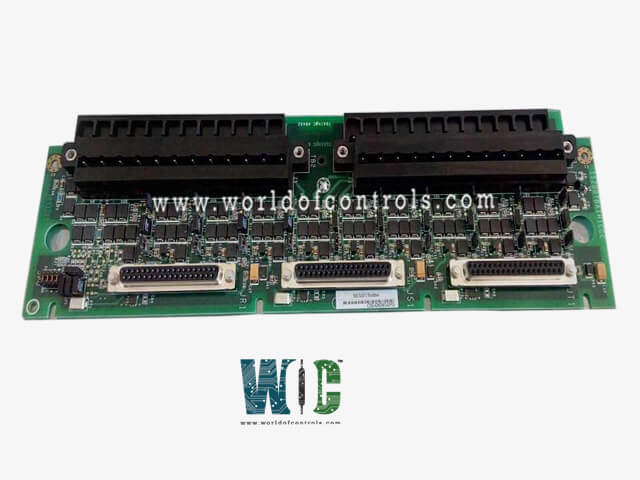
World Of Controls understands the criticality of your requirement and works towards reducing the lead time as much as possible.
IS200TBAIH1C - Analog Input Terminal Board is available in stock which ships the same day.
IS200TBAIH1C - Analog Input Terminal Board comes in UNUSED as well as REBUILT condition.
To avail our best deals for IS200TBAIH1C - Analog Input Terminal Board, contact us and we will get back to you within 24 hours.
Part Number: IS200TBAIH1C
Manufacturer: General Electric
Series: Mark VI
Product Type: Terminal Board
Availability: In Stock
Country/Region of Manufacture: United States(USA)
Repair: 3-7 Days
Manual: GEH-6421J
Functional Description
IS200TBAIH1C is an Analog Input Terminal Board manufactured and designed by General Electric as part of the Mark VI Series used in gas turbine control systems. Two outputs and 10 analog inputs are supported by the Analog Input terminal board. Two-wire, three-wire, four-wire, or transmitters that are powered externally can all be plugged into one of the ten analog inputs. A current of 0-20 mA or 0-200 mA can be configured for the analog outputs. Surge and high frequency noise are protected from by noise suppression circuitry in the inputs and outputs.
For connecting to the I/O processors, the TBAI has three DC-37 pin connectors available. It is possible to connect using TMR with all three connectors or simplex on one connector (JR1). Both direct connections to the electronics and cable connections are possible. To the three connectors for the R, S, and T controls in TMR applications, the input signals are fanning outward. Utilizing a measuring shunt on the TBAI, the total current of the three output drivers that are connected is combined to run TMR outputs. Following that, the electronics are given the total current signal by the TBAI so they can regulate it to the specified setpoint.
Fig 1: TBAI Input Terminal Board
The two I/O terminal blocks located on the terminal board are directly linked to the 10 inputs and the two outputs. Each block is secured with two screws and contains 24 terminals that can accommodate wires up to #12 AWG. Next to each terminal block is a shield terminal attachment point. The following categories of analog inputs and outputs can be supported:
All of the transducers have access to a 24 V dc power source on the terminal board. By employing jumpers, one can select between current and voltage inputs. One of the two analog output circuits can be configured through a jumper for 4-20 mA or 0-200 mA, while the other can be adjusted for either. TMR applications can both use the same terminal board.
Transmitters/transducers can be individually powered or can be powered by the 24 V dc source in the control system. Jumpers J#A, J#B, and JO on the terminal board configure the input and output types of voltage and current, respectively. Diagnostics track each output, and if a defect cannot be fixed by a CPU command, a suicide relay in the I/O controller disconnects the relevant output.
Fig 2: Simplex Analog Inputs and Outputs
The terminal board can be configured using jumpers. Refer to the installation diagram for the position of these jumpers. The available jumpers are as follows:
WOC has the largest stock of GE Mark VI Control System Replacement Parts. Our team of experts at WOC is happy to assist you with any of your automation requirements. For pricing and availability on any parts and repairs, kindly get in touch with our team by phone or email.
What is Mark VI IS200TBAIH1C Analog Terminal Board?
The terminal board is a small analog input terminal board that connects to the I/O pack and accepts 10 analog inputs and two analog outputs.
What are the functions of terminal blocks?
A terminal block is an insulated, modular block that connects two or more wires. Terminal blocks are used in factories to secure and/or terminate lines. Terminal blocks are made up of multiple separate terminals that are placed in a long strip in their most basic form.
What is the Phone Number for WOC?
Please contact World of Controls FZE for sales at +1 609 385 1231